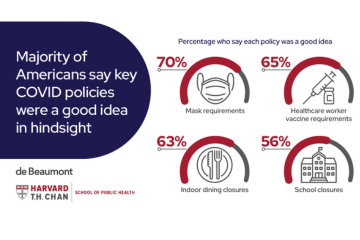
Whether a public health agency is developing a memorandum of understanding with a local university to access its journal collection or combining staff across health departments to support an emergency response, service- and resource-sharing agreements succeed when all partners engage in thoughtful planning, conflict management, and ongoing relationship building.
Explore Solutions
The Center for Sharing Public Health Services’ Spectrum of Cross-Jurisdictional Sharing Arrangements1 spans 4 categories, moving from looser integration to tighter integration: as-needed assistance, service-related agreements, shared programs or functions, and regionalization/consolidation.*
Before entering a sharing agreement, public health departments must have a strong grasp of the challenge at hand to decide the best course of action. While a straightforward information-sharing agreement typically requires little integration, a more complex endeavor such as creating a joint program is further along the spectrum of integration. Agency leaders need to be able to clearly explain their goals to determine the degree of formality and complexity that an agreement will involve. Having this understanding will also help determine the most beneficial partners to include in an agreement.
Develop Trust
Creating a foundation of trust is key to a successful resource- or service-sharing agreement. It is an ongoing process, and one that requires all entities to be candid in their needs and concerns. However, the more partners there are in a sharing agreement, the more complex it may become to ensure that everyone gets what they need out of the relationship. Setting clear expectations at the beginning of the process is essential for maintaining a strong relationship among partners.
All entities should have a common understanding of what the agreement will involve, including the value that each partner brings to the agreement and what they will each contribute to achieving the overarching goal. Should complications arise, partners can return to the expectations initially outlined in their contract to decide how to move forward.
Misaligned expectations may be related to inequities in sharing agreements. In some agreements, a larger and more-resourced jurisdiction may drive decision making at the detriment of fellow entities. In other multijurisdictional agreements, there may be tensions when certain partners feel that they are “pulling more weight” than others by contributing a larger portion of resources or services. Such inequities, whether perceived or real, can chip away at trust and lead to the dissolution of relationships. Jurisdictions can stave off turmoil by identifying concerns early and working across partners to resolve them.
Embrace Change
Changes are to be expected over the course of a sharing agreement. Populations grow and shrink, jurisdictions experience fluctuations in their budgets, and the composition of governing bodies changes with election cycles. These and other changes can affect the mission or purpose of an agreement and many partners’ desire for continued involvement. Besides embracing change as a normal part of a sharing agreement and preparing for the inevitable, implementing an annual review process or other regular check-ins encourages partners to stay on track when changes outside their control threaten the future of an agreement.
Prioritize Communication
Resource and sharing agreements thrive when partners practice open, consistent communication. Transparency in communication is vital; leaders of public health departments and members of partner entities should be forthright in explaining how the resources or services in an agreement are being used and to what extent.
Maintaining lines of communication between public health departments and governing bodies is particularly important for cultivating sharing agreements. Public health agency leaders need to be able to present to governing bodies on the outcomes of a sharing agreement and what is needed from all parties to keep up the momentum. They should also be prepared for questions about gaps and how they will be addressed.
Public-facing communication is another consideration for sharing agreements. Leaders of public health agencies can increase long-term support for their initiatives by communicating the benefits of resource and service sharing with their boards of health and other local entities.
Measure Impact
Developing measures for success helps hold partners in a sharing agreement accountable for their actions and pinpoint areas for improvement together. Such measures are particularly useful in assessing agreements that seek to achieve a specific outcome as opposed to simply filling a gap in a particular resource or service.
Both internal and external measures should be considered to explore the agreement from all angles. An internal-facing measure of efficiency could be assessing how many steps were able to be reduced or the time that staff need to complete a process. This type of analysis could point to the need for additional part-time employees as one potential solution. External metrics, such as assessing the reach of a resource or providing a service that was not previously available, are beneficial information for governing boards and other local partners engaging in community health assessments.
Resources and Tools
The Center for Sharing Public Health Services, a division of the Public Health Accreditation Board (PHAB), offers a range of tools and resources to support public health agencies in establishing and maintaining successful sharing agreements. For more information, visit https://phaboard.org/initiatives/centerforsharing.
Reference
1. Center for Sharing Public Health Services. Spectrum of sharing agreements. phsharing.org/wp-content/uploads/2021/04/041221-CSPHS_Spectrum_of_Arrangements-1.pdf. Accessed June 1, 2023.
*The current spectrum encompasses specific instances of service and resource sharing focused on cross-jurisdictional agreements among 2 or more health departments. While many of these types of arrangements may apply to other sharing instances, the Center for Sharing Public Health Services is developing a broader tool to frame the various ways that sharing can occur.
This column first appeared in the September/October 2023 issue of the Journal of Public Health Management & Practice. See the final authenticated version.




